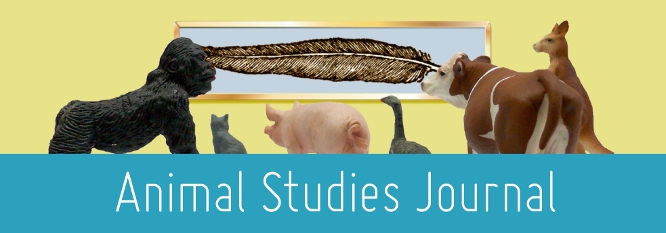Home > assh > ASJ > Vol. 8 (2019) > No. 1

Abstract
It’s 2016 and rats are ‘taking over’ in Malmö, Sweden. Forced out of the sewers by flooding, the sight of usually-hidden rats now visible on streets and playgrounds (not to mention their dead bodies in the river) has humans calling for sanitation through eradication to ‘restore’ social order. In daring to exist ‘out of place’ in their search for food the rats ‘turn from tolerated, illegitimate, but invisible waste-workers, to ‘trash animals’ (1). This dramatic scene which opens Animal Places ‘shows how space, place and human-animal relations intersect, thereby producing diversity of effect, boundary work and political action’ (1). Building on Jennifer Wolch and Jody Emel’s Animal Geographies: Place, Politics and Identity (1995), and Chris Philo and Chris Wilbert’s Animal Spaces, Beastly Places: New Geographies of Human Animal Relations (2000), this edited collection offers an important contribution to scholarship that meaningfully considers animals’ relations to place and space. At its core, Animal Places argues for zoo-sensitive, lively cartographies that can better map human-animal relations and animal geographies; moving beyond a human centric focus to ‘include animals in ways that permit us to “story place differently” (van Dooren and Rose 2012)’ (9).
Recommended Citation
Sutton, Zoei, [Review] Jacob Bull, Tora Holmberg and Cecilia Åsberg, editors, Animal Places: Lively Cartographies of Human-Animal Relations. Routledge, 2018. 276pp, Animal Studies Journal, 8(1), 2019, 231-233.Available at:https://ro.uow.edu.au/asj/vol8/iss1/15
Included in
Agricultural and Resource Economics Commons, Art and Design Commons, Art Practice Commons, Australian Studies Commons, Communication Commons, Creative Writing Commons, Digital Humanities Commons, Education Commons, English Language and Literature Commons, Feminist, Gender, and Sexuality Studies Commons, Film and Media Studies Commons, Fine Arts Commons, Legal Studies Commons, Linguistics Commons, Philosophy Commons, Political Science Commons, Public Health Commons, Race, Ethnicity and Post-Colonial Studies Commons, Sociology Commons, Theatre and Performance Studies Commons

